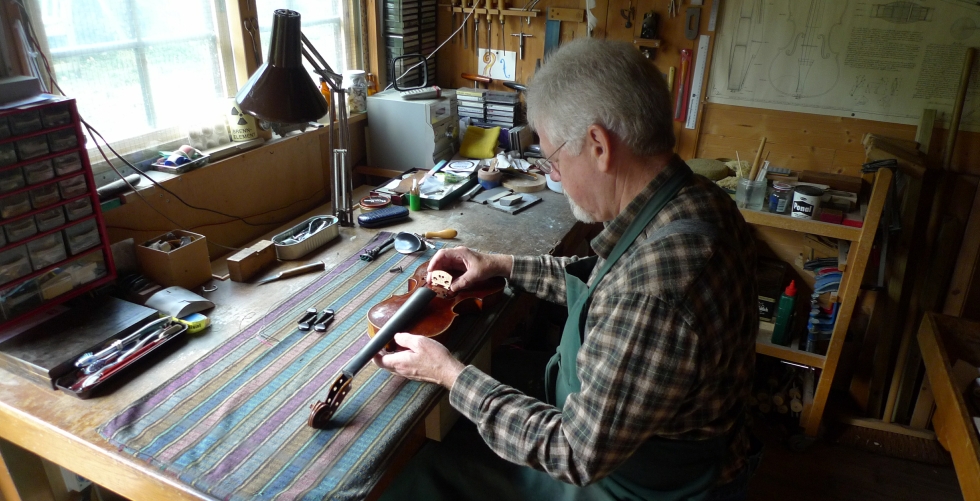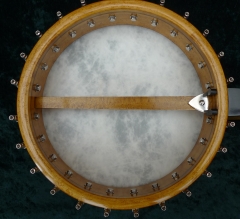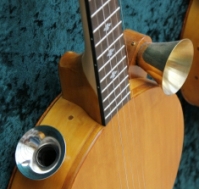Helmut Rheingans

Although I take my inspiration largely from the Old Masters, my approach is to try to get an understanding of their aims, intentions, reasons for doing things in a certain way, then evaluate and, in applying my own work ethics and time-honed working methods, create an original instrument. Uncompromising standards of craftsmanship, a strict code of work ethics and keeping an open and inquisitive mind were some of the attributes of the Heiligenberg School Of Making where I served a 4-year apprenticeship, and I try to uphold these principles
Varnish
Wood
Working on the sound of an instrument starts with the right choice of wood.
Choosing a piece of wood is a very exiting and intimate experience.
The look, the feel, the weight, the musical properties are carefully tested
by knocking and listening...
It is also a personal choice, one has to make friends with it.
Apart from the traditional woods used - figured sycamore and alpine spruce -
I like to work with willow; straight grained it is used on the inside of the instrument
for blocks and linings.
The more figured variety is very suitable for backs, especially for violas.
For the fittings I use almost exclusively old french boxwood. It not only looks
nice but it is lighter than ebony and reduces the weight of the instrument;
and I prefer to use european woods from sustainable sources.
Most of the wood I'm using at present has been seasoned for about thirty years,
some of it is older, nothing younger than ten.
© 2024 FavThemes

